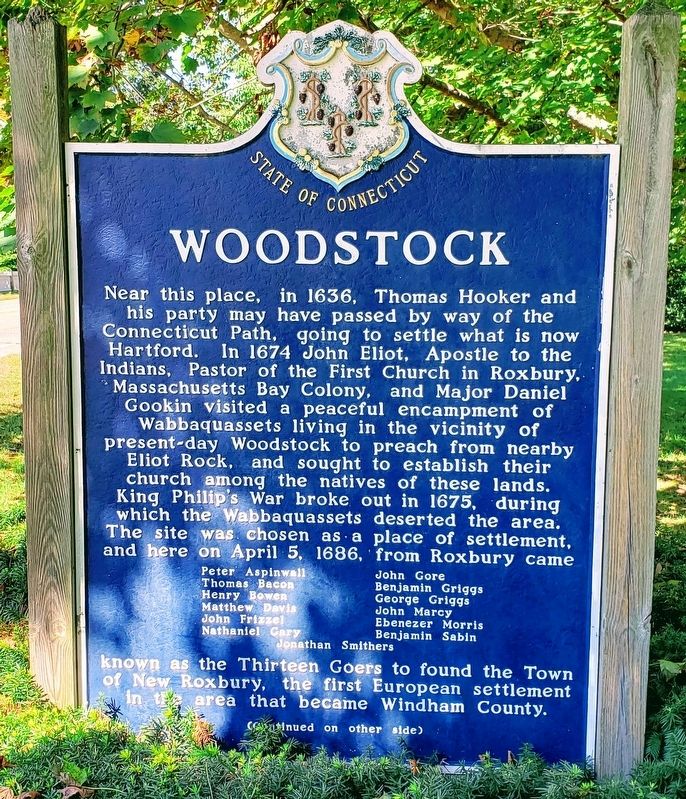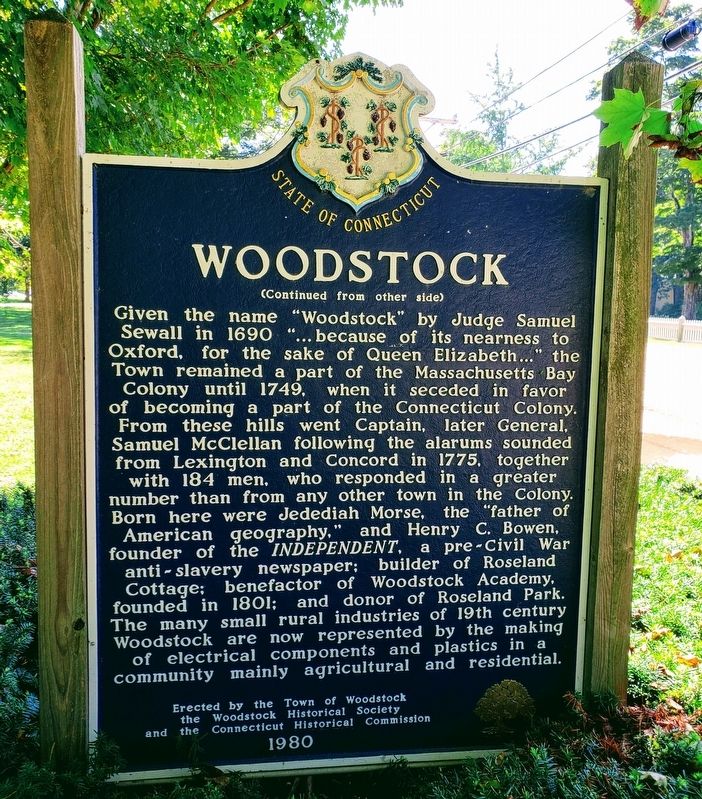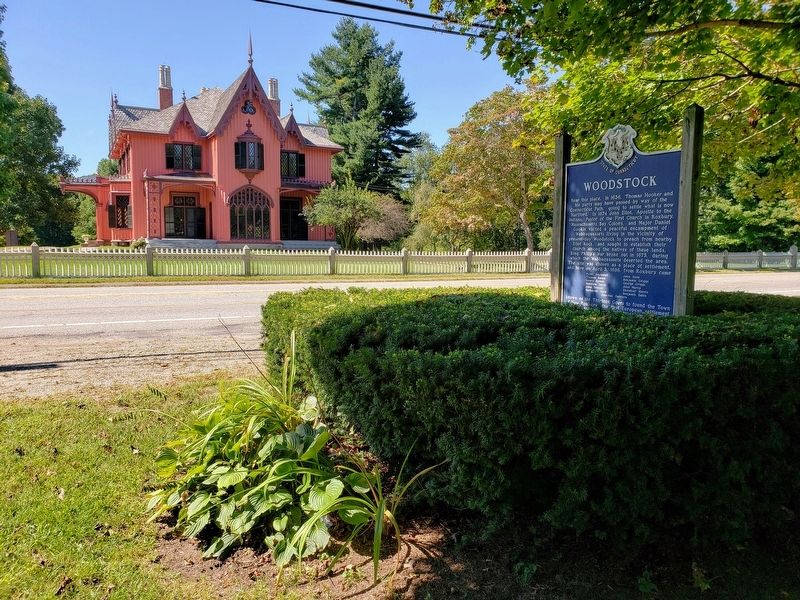Woodstock in Windham County, Connecticut — The American Northeast (New England)
Woodstock
Near this place, in 1636, Thomas Hooker and his party may have passed by way of the Connecticut Path, going to settle what is now Hartford. In 1674 John Eliot, Apostle to the Indians, Pastor of the First Church in Roxbury, Massachusetts Bay Colony, and Major Daniel Gookin visited a peaceful encampment of Wabbaquasetts living in the vicinity of present-day Woodstock to preach from nearby Eliot Rock, and sought to establish their church among the natives of these lands. King Phillip’s War broke out in 1675, during which the Wabbaquasetts deserted the area. The site was chosen a place of settlement, and here on April 5, 1686, from Roxbury came
Peter Aspinwall • Thomas Bacon • Henry Bowen • Matthew Davis • John Frizzel • Nathaniel Gary • John Gore • Benjamin Griggs • George Griggs • John Marcy • Ebenezer Morris • Benjamin Sabin • Jonathan Smithers
Known as the Thirteen Goers to found the Town of New Roxbury, the first European settlement in the area that became Windham County.
Given the name “Woodstock” by Judge Samuel Sewall in 1690 “…because of its nearness to Oxford, for the sake of Queen Elizabeth…” the Town remained a part of the Massachusetts Bay Colony until 1749, when it seceded in favor of becoming a part of the Connecticut Colony. From these hills went Captain, later General Samuel McClellan following the alarums sounded from Lexington and Concord in 1775, together with 184 men, who responded in a greater number than from any other town in the Colony. Born here were Jedediah Morse, the “father of American geography,” and Henry C. Bowen, founder of the INDEPENDENT, a pre-Civil War anti-slavery newspaper; builder of Roseland Cottage; benefactor of Woodstock Academy, founded in 1801; and donor of Roseland Park. The many small rural industries of 19th century Woodstock are now represented by the making of electrical components and plastics in a community mainly agricultural and residential.
Erected 1980 by The Town of Woodstock, the Woodstock Historical Society and the Connecticut Historical Commission.
Topics. This historical marker is listed in these topic lists: Colonial Era • Patriots & Patriotism • Settlements & Settlers. A significant historical date for this entry is April 5, 1686.
Location. 41° 56.98′ N, 71° 58.545′ W. Marker is in Woodstock, Connecticut, in Windham County. Marker is on Connecticut Route 169, on the right when traveling north. Touch for map. Marker is at or near this postal address: 556 CT-169, Woodstock CT 06281, United States of America. Touch for directions.
Other nearby markers. At least 8 other markers are within 2 miles of this marker, measured as the crow flies. Henry C. Bowen House (within shouting distance of this marker); Town of Woodstock War Memorials (about 300 feet away, measured in a direct line); Town of Woodstock War Memorial I (about 400 feet away); The Woodstock Academy (about 400 feet away); Pulpit Rock Road (about 700 feet away); Plaine Hill (approx. 0.2 miles away); Quasset School (approx. 0.8 miles away); South Woodstock (approx. 1.1 miles away). Touch for a list and map of all markers in Woodstock.
Credits. This page was last revised on January 21, 2024. It was originally submitted on September 17, 2018. This page has been viewed 1,054 times since then and 680 times this year. Photos: 1, 2, 3. submitted on September 17, 2018. • Bill Pfingsten was the editor who published this page.


